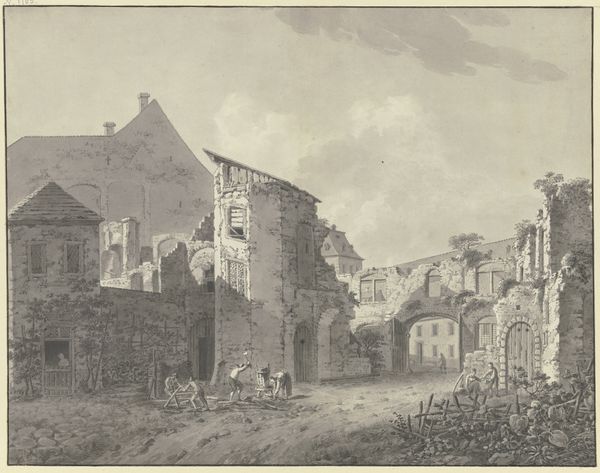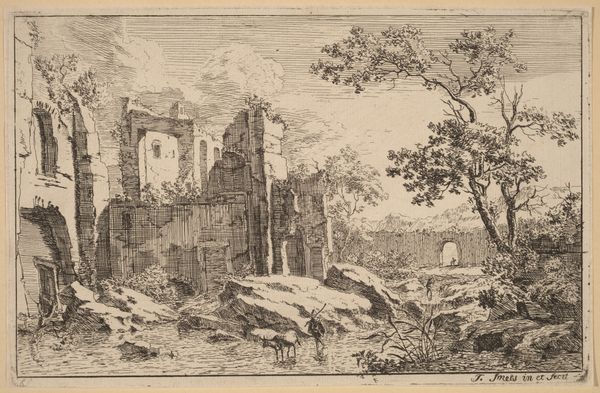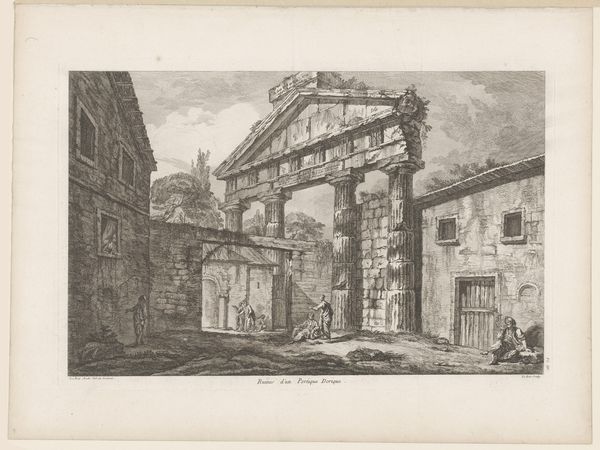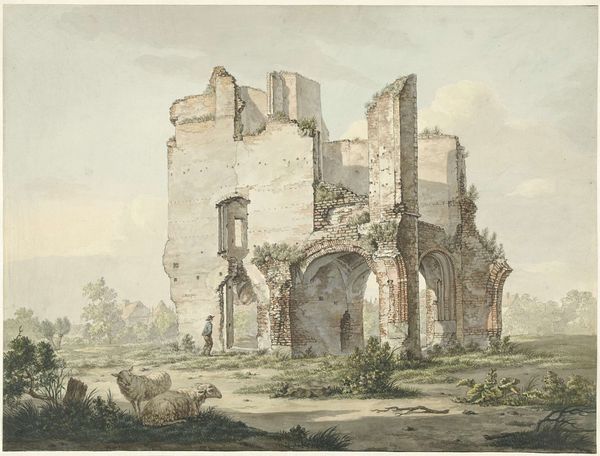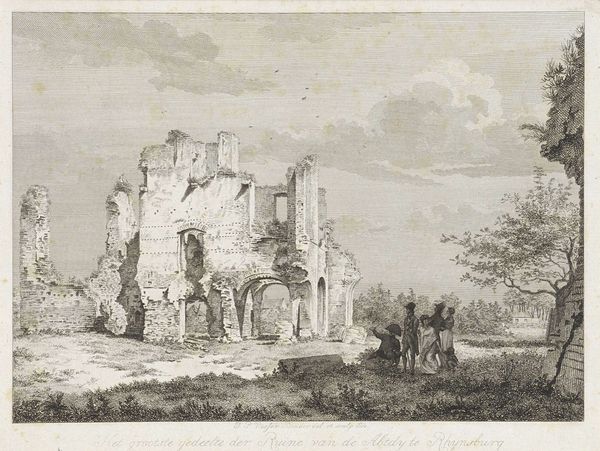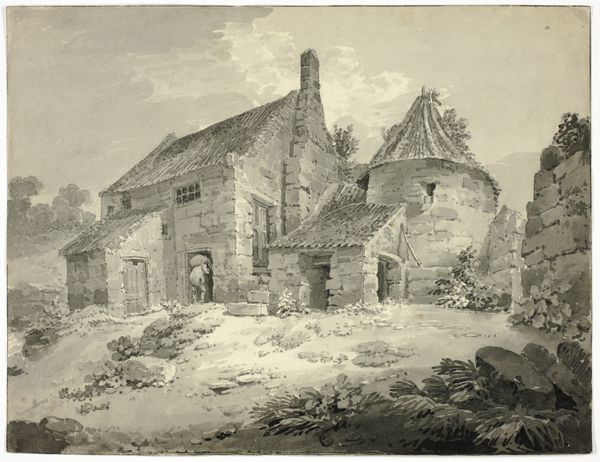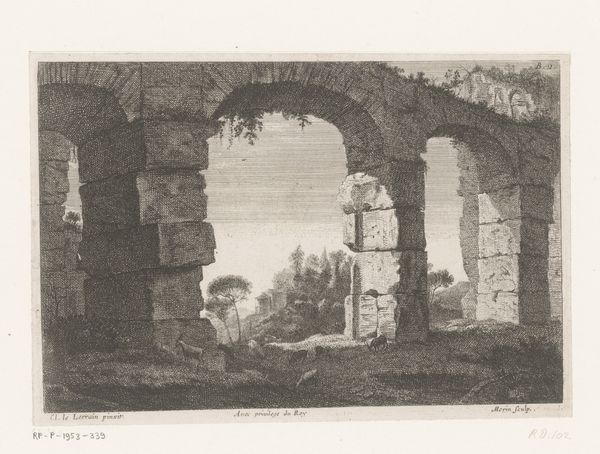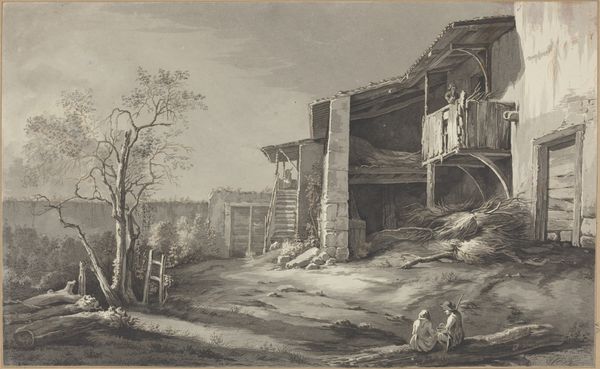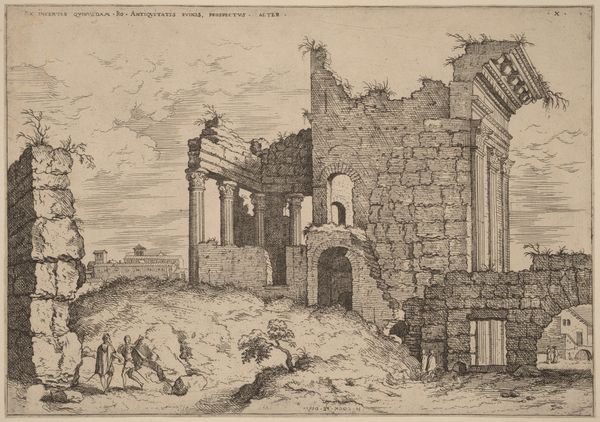
Großes verfallenes Gebäude, rechts ein Mann mit zwei Kindern, links ein Maler
0:00
0:00
drawing, ink, indian-ink, architecture
#
architectural sketch
#
drawing
#
toned paper
#
light pencil work
#
pencil sketch
#
old engraving style
#
incomplete sketchy
#
etching
#
ink
#
german
#
classicism
#
indian-ink
#
romanticism
#
pen-ink sketch
#
15_18th-century
#
pen work
#
pencil art
#
architecture
Copyright: Public Domain
Editor: Here we have "Großes verfallenes Gebäude, rechts ein Mann mit zwei Kindern, links ein Maler," attributed to Johann Heinrich Troll. It's an ink and pencil drawing depicting the ruins of a large building. There's a really melancholic feel to it, with nature reclaiming this once grand structure. What historical context am I missing when looking at this work? Curator: It is interesting how the Romantic ruins became popular, a meditation on time and empire that spoke to viewers and artists. Look at how the staffage is implemented: the people feel small compared to the architecture. Editor: Yes, that definitely adds to the sense of transience. Why do you refer to them as the "staffage?" Curator: Think about the function of such works: drawings like these were often created as independent works of art but sometimes were preparations for larger paintings or architectural documentation, sold as souvenirs or studies, as keepsakes of these sublime sites, which raises the question of accessibility. These elements were added at a later stage. This could perhaps signal the move from commissioned work for royals or religious structures to being open to the public gaze. Who do you imagine this drawing was for? Editor: That’s a fascinating point. I hadn’t considered the shift in patronage and audience. Perhaps a wealthy individual, embarking on a Grand Tour and looking for a memento? It makes you wonder if this scene is staged somehow, idealized, to cater to certain romantic sensibilities. Curator: Precisely! And that idealization touches on power dynamics, who gets to shape the narrative of decline and renewal? Editor: That is very interesting indeed. Now I look at this drawing differently, seeing it more as a historical artifact.
Comments
No comments
Be the first to comment and join the conversation on the ultimate creative platform.
